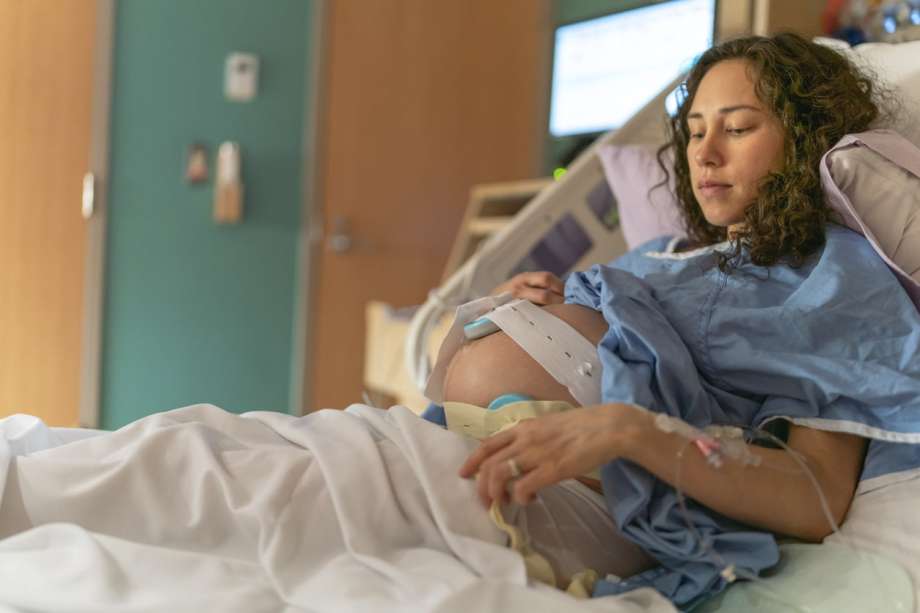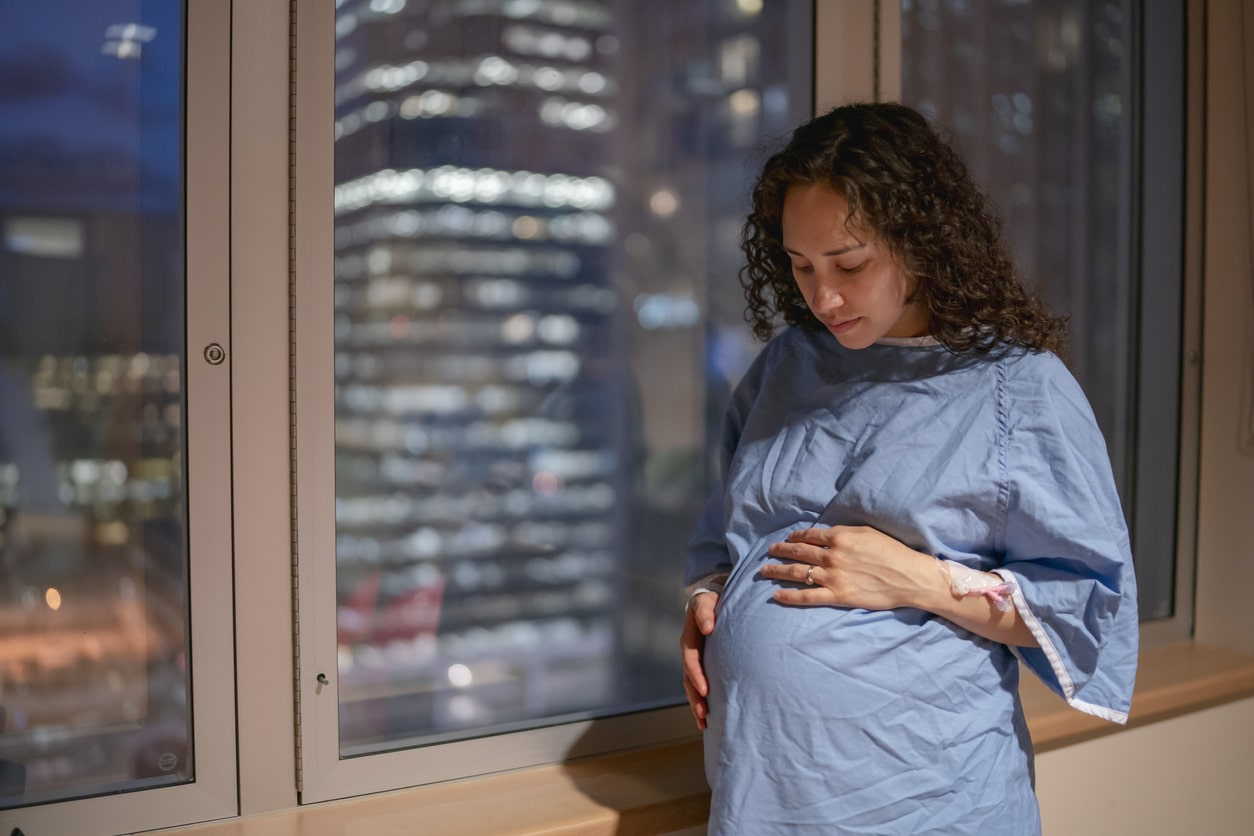Can a Membrane Sweep Induce Labor? Pros and Cons

If you’re near the end of your pregnancy or even past your due date, you probably would do anything to get your labor started and for your little one to finally make their appearance.
However you are feeling, it is important to learn about the risks and benefits of getting a membrane sweep before labor. Make sure to weigh your options and consult with your OB-GYN so that you can make the best decision for yourself and your soon-to-be-arriving baby.
Related: 10 Completely Natural Ways to Induce Labor
What is a Membrane Sweep?
A membrane sweep is a procedure that may be performed by healthcare professionals in late pregnancy to encourage the onset of labor. A membrane sweep may also be called a “membrane strip” or a “stretch and sweep.”
During the membrane sweep, your healthcare provider will attempt to separate the amniotic sac from the lower part of the uterus. If you and your healthcare provider have discussed membrane sweeping and determined that it should be done, and your cervix is closed, they may recommend trying cervical massage.
During cervical massage, the outside part of the closed cervix is massaged by the healthcare provider’s gloved fingers. This may result in a release of hormones and chemicals similar to having your membranes swept.
Toto perform a membrane sweep, you will need to have a vaginal examination and your cervix must be dilated at least one centimeter. Most healthcare providers do not offer to induce labor until the 39th week of pregnancy when you are considered full-term.
If you have a medical reason to be induced early, such as diabetes or hypertension, your healthcare provider may recommend doing this earlier than 39 weeks of pregnancy to help your body prepare for labor. A membrane sweep can also be done after your due date.
Most people who are experiencing a full-term, low-risk pregnancy are good candidates for a membrane sweep.
The Membrane Sweep Procedure
A membrane sweep is performed by your healthcare provider inserting one or two gloved fingers through the vagina and the cervix, then moving the fingers back and forth in a circular sweeping motion between the amniotic sac and the lower part of the uterus.
This results in the separation of the sac from the uterine wall, which triggers the release of prostaglandins. A membrane sweep is not part of a typical cervical exam, which is using the fingers to feel how open and thin the cervix is.
If your healthcare provider recommends a membrane sweep, or if you request one, the procedure should be discussed prior to the exam so that you can provide informed consent.
Membrane sweeps may be performed more than one time. For example, if your doctor or midwife suggests induction of labor at 41 weeks gestation, they may recommend membrane sweeps at your 39-week and 40-week prenatal appointments to see if they can trigger spontaneous labor before the induction of labor is needed.

Effectiveness of Membrane Sweep in Inducing Labor
The effectiveness of membrane sweeping is unclear. Many people who have their membranes swept are disappointed when labor does not begin right away. While it is considered a labor induction method, it is not likely to immediately result in labor.
Rather, it may make your labor start a couple of days earlier than it otherwise would have started. However, research tells us that people who have membrane sweeps in late pregnancy are more likely to have spontaneous labor, and are less likely to need a formal induction.
A formal induction may include methods of induction such as medical devices, cervical ripening or pitocin in a hospital setting. Unfortunately, the studies on membrane sweeping are not very clear in telling healthcare providers when or how often membrane sweeps should be performed to promote spontaneous labor.
Some studies evaluated people having membrane sweeps every week from 36 or 37 weeks until the end of pregnancy, while other studies only evaluated membrane sweeps after 39 weeks and did not report how often they were performed. Because of this, it is difficult to know if one membrane sweep improves your chances of labor starting on its own, or if more than one may be needed.
It is unclear if membrane sweeping reduces the chance of needing a cesarean delivery or increases the chances of a vaginal delivery without help from forceps or a vacuum.
Purpose and Benefits of a Membrane Sweep
A membrane sweep is typically performed to help prepare the cervix for labor, or possibly start labor sooner than it otherwise would have started on its own.
When a membrane sweep is performed, the amniotic sac is slightly pulled away from the wall of the uterus and the cervix is stretched. This is done to help release substances called prostaglandins, which may soften and dilate the cervix.
Having the cervix stretched can also cause a release of oxytocin, which can cause contractions. While it is not common, a membrane sweep also has the potential to start full-blown labor.
Even though labor may not start within a day or two of the membrane sweep, research indicates that people who have membrane sweeps in pregnancy may be more likely to experience spontaneous labor and less likely to need a formal induction of labor.
Side Effects and Risks of a Membrane Sweep
There are some risk factors that might make you too high-risk to have a membrane sweep performed. People who have a placenta previa or a low-lying placenta should not have a membrane sweep performed.
If you know that you will need a cesarean birth, a membrane sweep should not be performed. If you have an active vaginal infection or an outbreak of genital herpes, it is not considered safe to perform a membrane sweep.
The most common side effect of a membrane sweep is pain. Some people do not find membrane sweeps uncomfortable, while others find them moderately painful. Occasionally, someone who has their membranes swept will report severe pain.
In addition to causing pain at the time of the procedure, some people feel strong uterine cramping for hours or even days after the procedure is performed. This can increase difficulty sleeping, and possibly lead to increased trips to the labor and delivery unit to get checked over for signs of labor.
In addition to cramping, many people note light bleeding after the procedure. While light vaginal bleeding from a membrane sweep is not harmful, it can increase anxiety and worry in the pregnant person.
People who have a membrane sweep are more likely to experience premature rupture of membranes, which is when the amniotic sac breaks before labor starts.
While this may sound like a good thing (your water broke – it’s time to have a baby!), your water breaking before labor starts may result in longer labor, the need for induction of labor and an increased chance of infection.
It is possible that pregnant people who are positive for Group B Strep (GBS) may have an increased risk of infection if they have a membrane sweep, but there is not enough information on this to say for sure.
Deciding if a Membrane Sweep is Best for You
Overall, membrane sweeping is a relatively safe procedure and is a low-cost intervention that might help your body start labor spontaneously. It does not increase your risk of significant complications like stillbirth or placental abruption.
If you are near the end of pregnancy and hoping to avoid an induction of labor in the hospital, talk to your healthcare provider about whether or not they recommend membrane sweeping.

